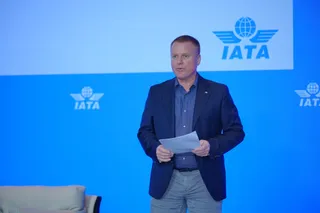Interview with Chad Epps, MD, Executive Director of Healthcare
Contact Our Team
For more information about how Halldale can add value to your marketing and promotional campaigns or to discuss event exhibitor and sponsorship opportunities, contact our team to find out more
The Americas -
holly.foster@halldale.com
Rest of World -
jeremy@halldale.com
Medical Training Magazine Interviews:
Chad Epps
MTM: What are learning technologies offering to health care and what is their impact on learning (education and training) across the community?
Chad Epps: Our current learning technologies are transforming how we educate healthcare professionals. Technology-enhanced educational environments are more in line with adult learning theory which includes immersion and experiential learning.
MTM: How do you see learning technologies evolving in the healthcare learning community in the next five years?
CE: There will likely be some growth in current high fidelity technologies, including manikins and task trainers. And there will be an even larger explosion in virtual and augmented reality technologies. There is much work being done in this area and it opens many doors. It will allow us to offer simulated experiences outside of a center in a more standardized way. For those of us in academia, this means students across multiple campuses will be exposed to comparable simulation experiences more easily.
MTM: The healthcare community continues to “close the training gap” with other high risk sectors, the military and civil aviation in particular, by embracing debriefing, expanded team training and other strategies. What is SSH’s position on implementing even more rigorous training standards, having to retrain if a healthcare provider does not successfully perform in a simulation scenario, for instance?
CE: Within the Society there has been much talk about developing and implementing training standards. We recognize that another industry improved by simulation, civil aviation, improved only with regular required training, often every six months. It may be that we won’t see similar effects from healthcare simulation until we determine the optimal time and dose to effectively improve patient care.
MTM: As a user and proponent of learning technologies (distance learning, manikins, others), your suggestions on how the simulation & training industry needs to be more responsive to the healthcare community’s learning requirements.
CE: Cost is perhaps the most significant barrier to more widespread use of simulation. I think it’s unfortunate that simulation technology, in general, is still quite expensive. Perhaps there is not enough competition and little incentive for current vendors to work together towards a standard for cross-platform optimization or even open access. The wide-spread utilization of healthcare simulation depends greatly on the affordability of technology.
MTM: Let’s follow up from our discussion at 2016 IMSH. You voiced interest in partnering with INACSL [International Nursing Association for Clinical Simulation and Learning] to conduct regional workshops to allow others in the field to learn about simulation. How is that effort going?
CE: SSH and INACSL offered the first joint regional workshop last month at Sage University in New York. The workshop was a great success with just over 40 attendees and the evaluations were overwhelmingly positive. The workshop was intended to be a low-cost opportunity to dialog around simulation guidelines and local regulation by the Boards of Nursing and utilization of NCSBN Simulation Guidelines for Pre-licensure Nursing Programs. There was also a focus on applying the INACSL Standards of Best Practice and SSH accreditation standards. The planning committee continues to work on next locations with plans for two in spring 2017 and two in fall 2017. These could grow based on demand.
MTM: Has there been progress to address another SSH item of interest: focusing a bit more on systems integration – the integration of simulation into the health system to improve patient care and patient safety?
CE: The “Healthcare Systems Modeling & Simulation” Affinity Group was recently formed to focus on systems and integration. Ultimately this activity impacts patient care and patient safety. Though young, this is the Society’s largest member group with over 1,800 members. They meet monthly and feature webinars to continue development in this important area.
MTM: You were also interested in partnering with NPSF [National Patient Safety Foundation] to push the patient safety agenda forward together. What’s the status of your outreach effort to the Foundation?
CE: SSH representatives attended both the NPSF Congress and Lucian Leape Institute Forum. At both occasions, we met with NPSF leadership to continue the conversation about how we can send a joint message about healthcare simulation and its impact on patient safety. The theme of IMSH 2017 is “Patients: The Heart of Simulation” which respects this focus. NPSF staff will present a pre-conference session on Patient Simulation at IMSH 2017. This session will fall in a new IMSH track for 2017: “Patient Outcomes, Quality, and Safety.” In addition, a new member affinity group is being formed with a focus on patient safety.
MTM: As another follow-up, how can learning technologies be better brought to bear to improve patient safety?
CE: Again, cost is a significant barrier. I think there has to be widespread adoption which will only occur as technologies become more cost effective and as we do more work to accurately reflect the return on investment.
MTM: And finally, update us on the implementation of SSH’s five-year strategy.
CE: SSH has made great progress in each element of the five-year strategic plan. Examples of success in each of the elements include:
- Identity: We are working to expand membership globally and collaborate with global partners. We have recently signed a memorandum of understanding with ASSH (Australian Society for Simulation in Healthcare) to expand certification within their membership. We are also actively engaging Chinese Healthcare Simulation programs to adopt accreditation and certification. • Value: We continue to expand our online library of on-demand resources that are freely available to members.
We are also creating a framework for recognizing member accomplishments by way of professional awards to be awarded annually at IMSH. The Society for Simulation in Healthcare Academy was identified as a strategic priority for this year and it has been created with the inaugural group of Fellows being inducted at IMSH 2017. The Academy is a cadre of thought leaders recognized by their peers for significant contributions to the advancement of healthcare simulation and the Society.
- Sustainability: The Meetings Oversight Commission has been hard at work developing an updated business plan for IMSH and creating sustainable materials to guide the planning and operations of IMSH. In addition, we will be commissioning a task force to make recommendations on future directions of IMSH. There has also been an intentional effort to diversify our revenue streams.
- Leadership: Staff and Society leadership have made great strides at improving both internal and external communication. The Media and Communications Committee is developing a written plan for external communication as well. To optimize communication between Board and committees, a Board member has been assigned as a liaison to each committee. And we are happy to continue developing leaders within the Society. All new committee chairs appointed by President-Elect Christine Park are rising into the position from the vice-chair position of the same committee. The plan for succession planning appears to be working. MTM
Biography
Chad Epps, MD trained in Anesthesiology at the Mount Sinai Medical Center and completed a fellowship in Human Patient Simulation at Mount Sinai’s Human Emulation Education and Evaluation Lab for Patient Safety and Professionalism. Dr. Epps is published in the areas of simulation-based interprofessional education and co-edited the text book Defining Excellence in Simulation Programs (Lippincott Williams & Wilkins, 2014).


